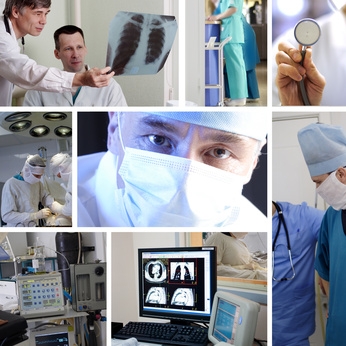Guest Post by Shelly Towns
 One of the most rapidly changing industries out there right now is the medical field. Inside the operating room the changes are obvious. Surgeons are now able to perform operations with greater precision than ever before using lasers and newly developed arthroscopic techniques and equipment. The diagnostic tools that lead them to finding the cause of a patient’s medical problems work hand in hand with the technology that lets them fix the problem.
One of the most rapidly changing industries out there right now is the medical field. Inside the operating room the changes are obvious. Surgeons are now able to perform operations with greater precision than ever before using lasers and newly developed arthroscopic techniques and equipment. The diagnostic tools that lead them to finding the cause of a patient’s medical problems work hand in hand with the technology that lets them fix the problem.
It is hard to imagine going in for a major medical procedure without first having the diagnostic test run. You seldom hear about exploratory surgeries because of the advancements in diagnostic medical regimens. Digital mammography is able to detect minute anomalies that were once imperceptible. This leads to more accurate diagnosis and less invasive surgeries that often are life altering.
Simple Procedures
Gall bladders can now be removed through the navel using arthroscopic methods. In the past this frequently performed procedure would consist of a four inch incision in the abdominal wall which would add significant recovery time to the process. Now patients can be back to work and fully functioning within days instead of weeks.
Anyone who watches sports has to be amazed at the strides that have been made regarding orthopedic procedures performed on athletes that have suffered devastating injuries on the field of play. What once were career ending injuries have now become a one year rehabilitation allowing players to return to the court or field fully functional. Technologies are not limited to surgical procedures. The rehabilitation process itself is benefiting from technological advancements which provide quicker recovery and lasting positive results.
Even Advanced Procedures
For the more significantly challenging procedures, such as joint replacement and transplants, there have been advancements greater than, or equal to, anything that has occurred anywhere in medicine. Recently a small hospital in a medium sized U.S. city announced its seven hundredth heart transplant. Pretty remarkable when you consider the first successful human to human heart transplant took place in 1967!
Organ transplants of almost any kind are now a daily experience for people across America all due to improved technology and techniques. Almost everyone knows someone who has had a joint replacement of some kind, or an organ transplant, and can personally attest to the amazing difference the installation of one of these devices or organs can make to a person’s quality of life.
Electronic Medical Records
As the techniques and technologies continue to improve the medical industry will rely more and more heavily on documentation to make sure that the best care is being made available to the greatest number of people in the most efficient way. Electronic medical records will allow physicians and other medical professionals to make life saving decisions and access critical patient information to achieve the most positive medical results using all of the available medical technologies from a larger number of sources.
Shelly Towns is a freelance writer on a variety of topics including ERM software. When she is not blogging or writing, Shelly loves to spend time reading and hiking.







